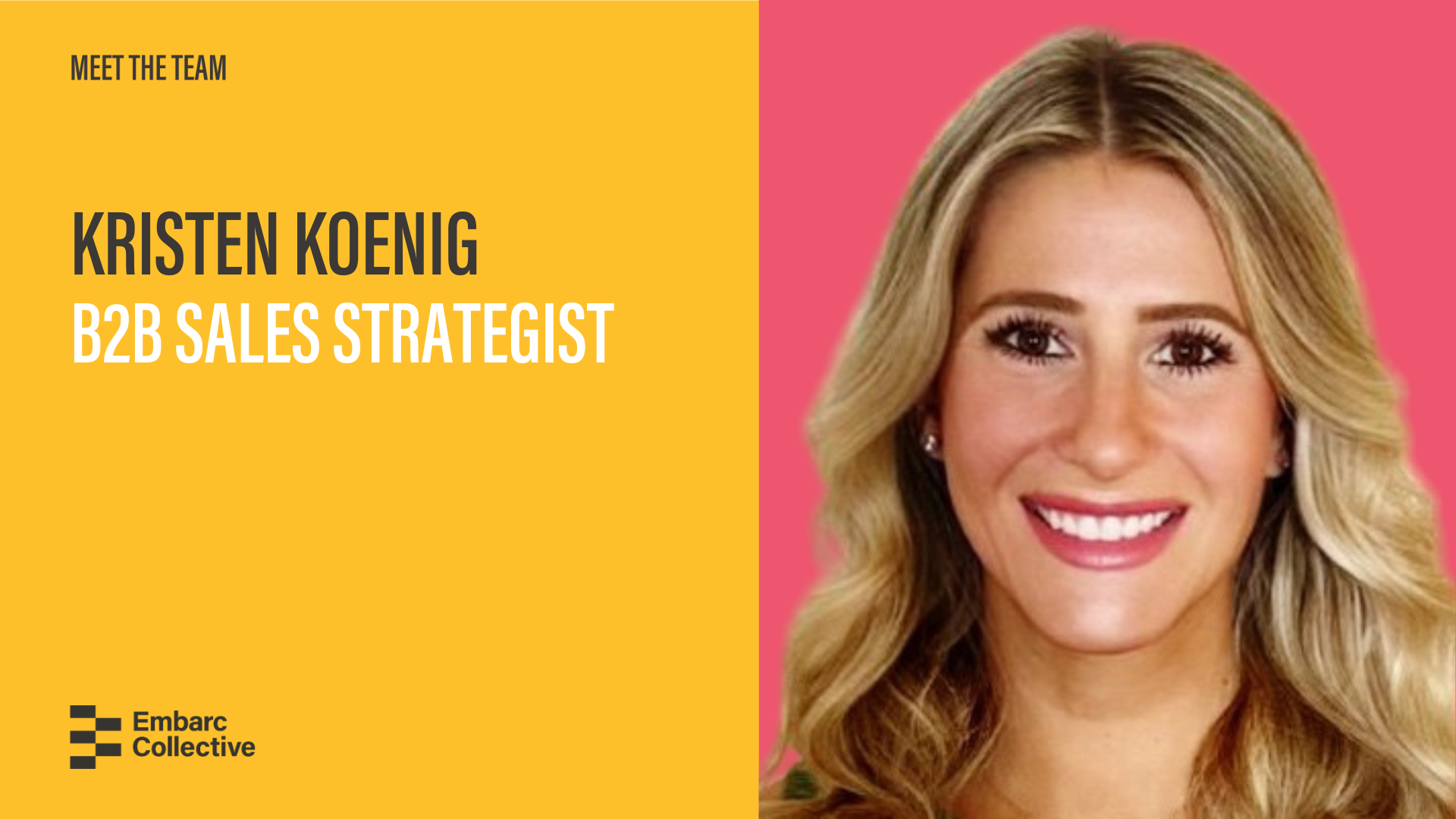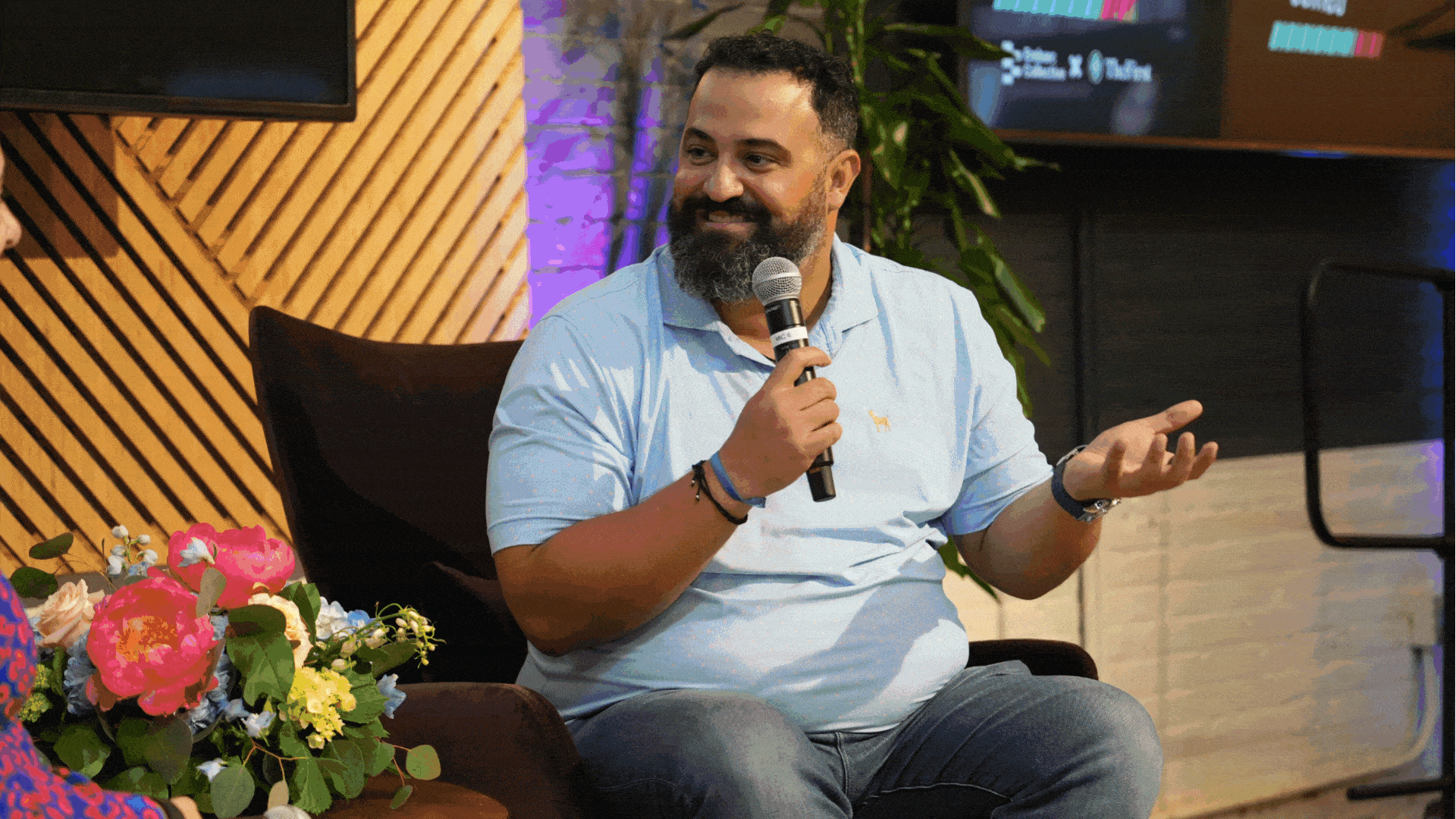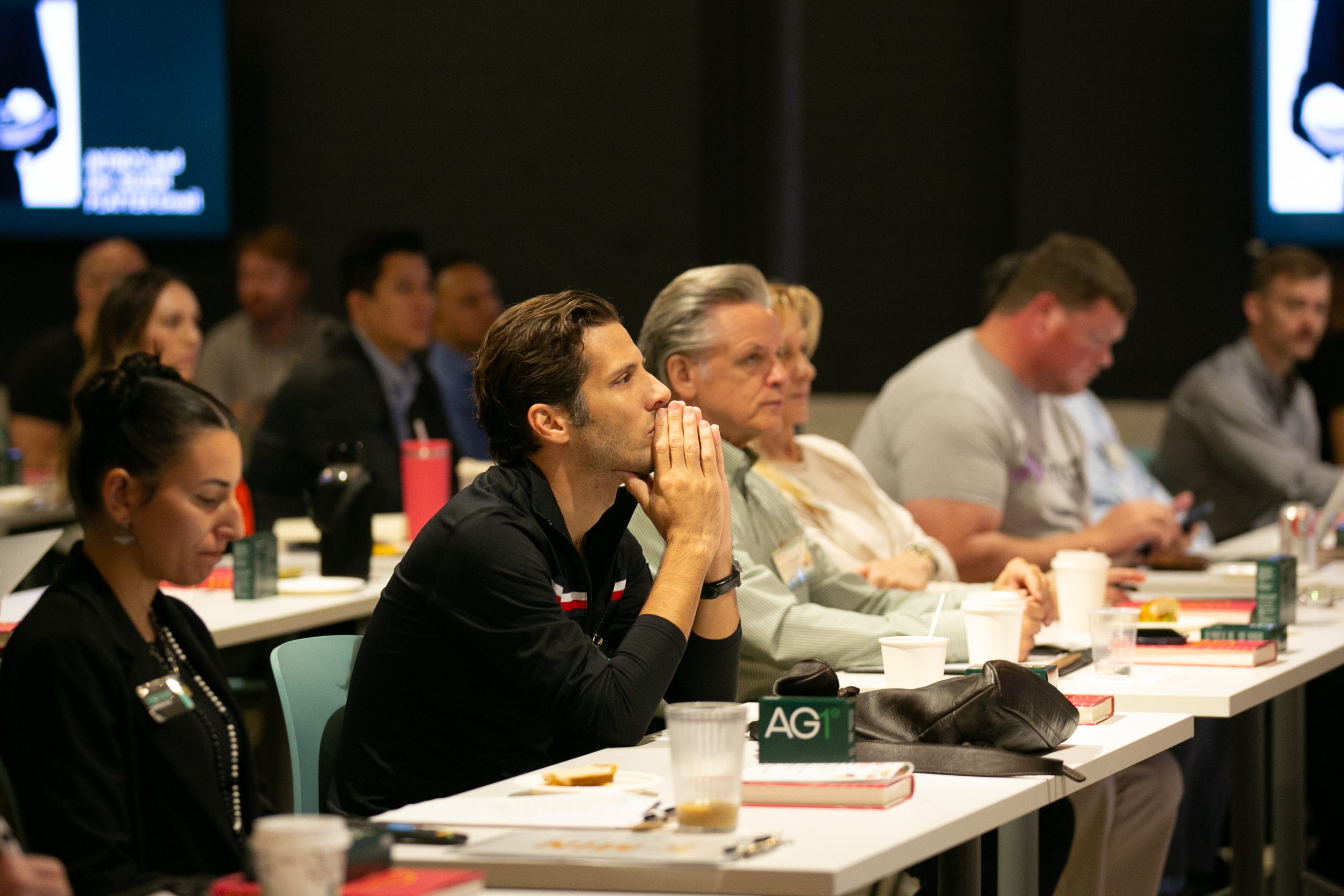
Leading a Rockstar Virtual Event with Kyley Hagan and Ally Gannon of Synapse
8 min read · Apr 16

Get the Weekly Collective
Learn about upcoming events and the latest startup news—delivered to your inbox weekly.
About The Author
Tyana Daley
To better understand how to host a rockstar virtual event, we interviewed two team members of theSynapse team, Community Engagement Manager, Kyley Hagan and Marketing Director, Ally Gannon. Synapse is a platform to connect and organize Florida’s innovation community. Like many organizations and businesses, Synapse pivoted quickly to move their community engagements online to continue connecting innovators and entrepreneurs as they had with in-person events. In March 2019, they launched the on-going Libate & Learn webinar series that features expert-led panels speaking on challenges presented by COVID-19 and providing insight to entrepreneurs on building resilience to tackle what’s ahead.
In this interview, Ally and Kyley shared their playbook to planning virtual events. They outlined key elements to focus on in the planning stages, how to market your webinar and ways to keep your audience engaged to minimize drop-off rate.
Planning a Virtual Event
“One thing you don’t realize when it comes to virtual events is how much work and planning truly goes into hosting them. I, like many people, thought it started with making a Zoom account, creating a Facebook event and sharing the Zoom link. However, I learned quickly through this experience that it is crucial to carve out time to strategically plan your event. The most important thing to spend time working on is your content,” says Kyley when asked what founders or startups should think about before planning a virtual event.
Ally furthers Kyley’s point by describing that taking the time to plan the content of the webinar series, from the speakers to the types of questions these experts should answer, are the steps that helped them successfully host the first webinar episodes. Once they had a framework in place, the procedure to produce a webinar became rinse and repeat and gave them more time to focus on planning content that resonates with their audience.
They suggest starting your webinar or virtual event planning process with a project plan that answers the following questions:
- What is the purpose of this webinar? Are you trying to educate an audience? Raise awareness? Connect people? Create a discussion?
- What is the business case for the webinar?
- Who is the webinar for? What do they care about? what would be helpful or a value-add?
- When is the best time to host the webinar for your intended audience?
- How long should it be?
If you’re drawing a blank with some of these answers, first identify your business case. Understanding the goal of your webinar will help determine the type of content you’ll need to create and for who. This will also help you understand how long the webinar or virtual event should be considering the audience. Ally says the key business case for Synapse is to serve as a virtual space that allows innovators to connect and share solutions during the COVID-19 crisis. After clearly defining their business case, the next question to answer is what are the current challenges their community needs support with and who is the best expert to help provide support? Kyley notes that you will naturally realize the importance of content once you begin a solid planning process.
The Synapse team decided to host the Libate & Learn series in an open, Q&A format where participants were allowed to join with audio and video. They limited the attendee list to 50 participants.
Ally says they worked ahead of the event to source questions from attendees that registered. They used the event registration form and follow-up emails as methods to collect information from registered guests. By sourcing questions from registered guests, they could go back to the expert and essentially provide an outline to frame the discussion.
Formatting Your Virtual Event
When planning what your virtual event format should look like, take into consideration your audience and their schedule. The format of your event could also be determined by the speaker, as they may want to lead the event with a presentation already created or prefer to have an open discussion from the beginning.
Once you’ve identified how the speaker content will work in your event, you can think of additional elements to keep your audience engaged. Consider playing music while your attendees wait for the event to kick off or lead with ice breakers to connect the audience members to the speakers. Kyley says unlike an in-person event where you can introduce food and drinks to promote connectivity between attendees, you’ll need to be a bit more creative to engage people in virtual events.
The Synapse team decided to host a multi-event series, which was important in helping them map out a larger editorial timeline, giving them space to make changes to content as their communities’ interest or speakers’ preferences change. Ideally, Ally suggests that if you plan a single event or a series of events, you’ll want to give your team a space of one to two weeks to produce an episode.
Marketing Your Virtual Event
Thinking of a strong title is key to getting attendees to take notice of your event. As you think about graphic and copy to support your event promotion, Kyley suggests building a title that is hyper-relevant to your audience and also clearly communicates the value add.
If you’re planning on doing a series, it may be easier to host the webinar at the same time every week and including this in your graphic design or marketing copy. Your audience can correlate your event with a specific time and day which can help with attendance. However, Ally advises that while you want to create a consistent schedule, be ready and nimble for last minute changes based on your speakers’ availability or content updates.
They also suggest using a single source to promote your event. The Synapse team chose to exclusively post the event on Eventbrite and promote via Facebook to help keep signups in one place. When throwing an in-person event, event planners will often use both Facebook and Eventbrite to promote events. Ally says this method is still effective, for the purpose of their webinar they wanted to keep a single source for event information due to the influx of news and virtual events during COVID-19.
Ally suggests you give your team three solid days to market your virtual event. She has adopted a framework that helps her think about Synapse’s promotion strategy.
- Narrow down which marketing channels you plan to target.
- Create a cadence of how often you plan to post on each channel and at what time.
- Determine if you need paid media to reach a new audience or if you can target your existing audience.
- Identify key messages should you share about the event.
- Create a list of speaker handles, organizations and hashtags to promote.
Next, Ally explains the importance of building a promotion schedule. Building a promotional schedule makes it easier to get the word out fast. You’ll want to run through this schedule with each event.
To save time in the marketing process, create templates that you can repurpose for event and social media graphics. Use tools likeCanva, which have thousands of existing templates you can repurpose, to create a consistent, branded look for your virtual event or series.
A sample promotion schedule for virtual events could look like:
- share event in newsletter 4 days before the event
- email a list of partners copy and link to the event to share with their members or employees 3 days before the event
- share on social media 4 days out from event
- provide guest speakers designed media and copy to share 2 days out from event
- share a final blast via newsletter to encourage last minute signups day before event
- share final blast on social day of event
Libate & Learn Marketing Graphics
Keeping People Engaged During Your Event
Kyley advises having one person on point to deal with any technical issues. You’ll want to admit people in your conference vs giving them permission to join openly to prevent things likeZoombombing or unwanted visitors joining. As virtual attendees roll in, the designated tech person will be responsible for adding folks into the virtual event without disrupting the speaker, the host or the attendees.
Certain video conference providers allow you to limit chat or video features for attendees. Zoom has a Q&A feature that allows the focus to be on the speaker and removes attendees capabilities to participate with audio or video. In turn, they can submit questions through a Q&A chat box shown on their screen. This feature is great for programming-focused virtual events to limit disruptions. For Synapse’s virtual events, they chose to have attendees participate with audio and video.
They also had a designated moderator on the team to guide the conversation and engage attendees throughout the event. When things would slow down, the moderator can step in to ask specific speakers questions or manage the flow of Q&A.
Best Practices for Success
Ally and Kyley both speak on the benefit of having different members of your team focus on separate elements of producing and hosting your webinar or virtual event.
At a minimum, you’ll want to separate your webinar development process in two areas, content and marketing. “While one member is planning content closely with the expert, the other team member is working on graphics and marketing copy as well as scheduling the event on platforms like Eventbrite or Facebook Events,” said Ally.
Using Zoom or other video conference tools are a must. They also leveraged online task managers to make sure tasks were not missed. This task list was also visible to the entire team for transparency on progress with each virtual event. Kyley mentioned that once that happens other members can jump in to help with other tasks to make sure things get done per schedule. You want to make sure you stick to your event date no matter what.
One solid tip both Kyley and Ally shared was to make sure you test your computer and mobile equipment before starting. Give yourself and the guest speakers 15 minutes before the event to run through a tech test. Ensure that microphones and cameras are working, the rules for your attendees’ participation are set and that lighting is good to go. These small details will level-up your virtual event.
To better understand the needs of their audience, the team sends attendees survey forms to ask about their experience. They utilize Google forms to create a link that is automatically shared with attendees via email after the event.
Additional Resources
- Virtual Meetings: 99 (Best) Tools, Ideas and Tips:
https://www.eventmanagerblog.com/virtual-meetings - Handshakes to Headsets: A Guide to Running Virtual Events:
https://www.shopify.com/partners/blog/virtual-events - Don’t Just Throw Together a Webinar — The Virtual Events Crash Course You Need:
https://firstround.com/review/dont-just-throw-together-a-webinar-the-virtual-events-crash-course-you-need/
Keep up with the latest in Tampa Bay startup news, local talent interviews and founder resources.
Delivered to your inbox every Thursday.
Related Articles

Embarc Collective Welcomes Kristen Koenig to the Coaching Team
For startup builders, navigating strategic partnerships and optimizing go-to-market strategies can s...

From Surviving to Thriving: Cultivating the ‘Outlast’ Mindset in Entrepreneurship
Startup building is an endurance sport with highs, lows, and everything in between. Our community of...

Supercharge Your Leadership: Lessons From Six Leaders Who Transformed Their Startups Into Global Success Stories
Advancing one’s leadership style has been top of mind for the entrepreneurs a part of our communit...
Meet Our Members
Meet the Embarc Collective member community of driven entrepreneurs who are building bold, scalable, thriving companies in Florida.
